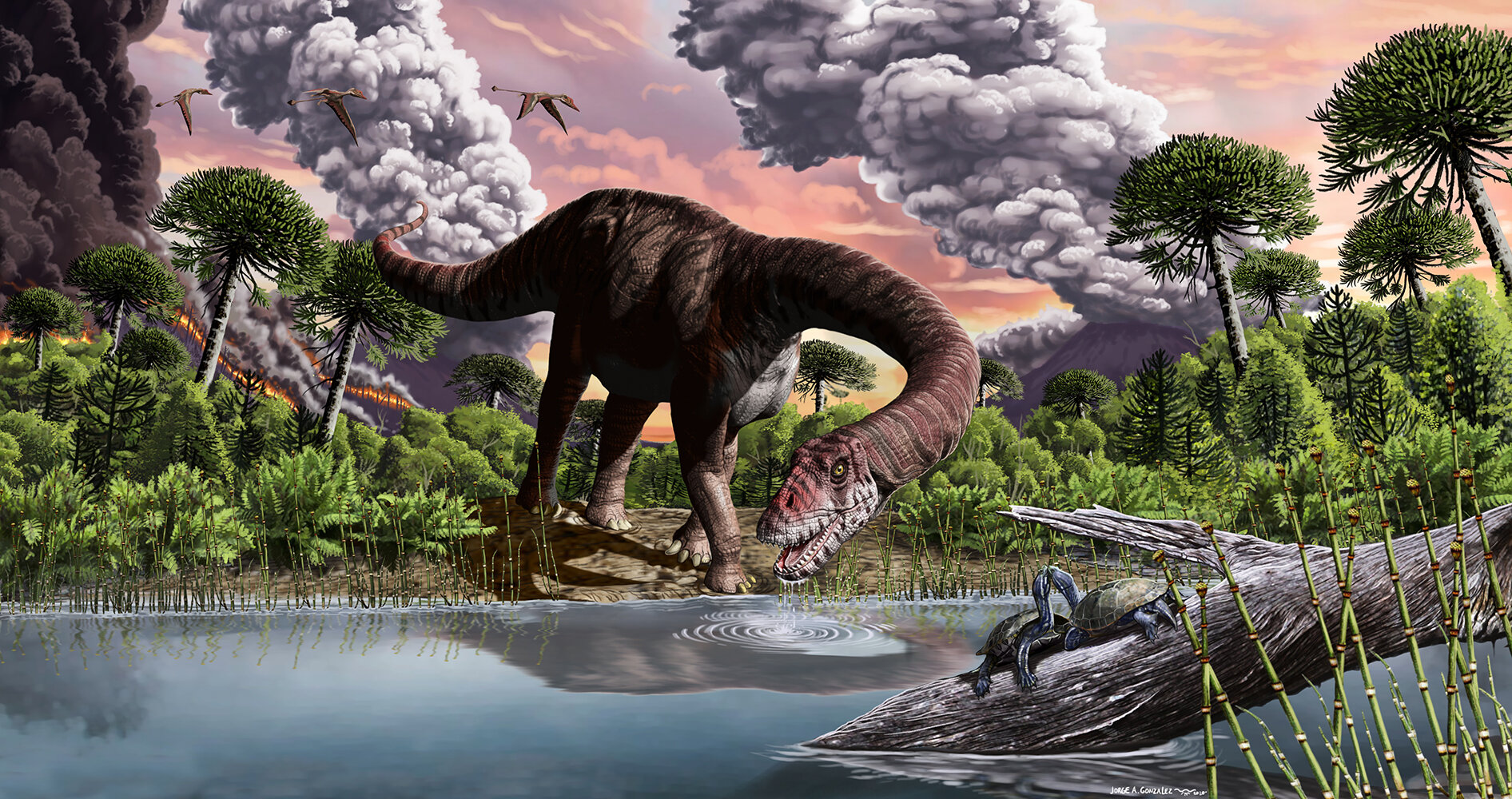
[ad_1]

Reconstruction of the first Bagualia alba sauropods. Credit: Jorge Gonzales
The word “dinosaur” tends to conjure up giant animals with massive bodies, long necks and tails, and tiny heads. These “quintessential dinosaurs” actually represent a prominent subgroup of dinosaurs, the so-called Sauropods (“long-necked dinosaurs” in popular culture). Sauropods were truly amazing animals, and included the largest known land animals, with body lengths of up to 40 meters and weights of 70 tons or more.
However, these giant animals did not appear directly at the start of the dinosaur era. During the first 50 million years of their evolutionary history, the Sauropodomorpha – the lineage to which the sauropods belong – were represented by several groups of bipedal to quadrupedal animals. Although some of them reached large bodies of around 10 meters in length and a few tons in weight, these groups also included smaller and lighter animals, some of which were no larger than a goat. . Moreover, all of these animals had thin teeth, indicating that these herbivorous animals fed on soft and lush vegetation. However, towards the end of the Early Jurassic period, around 180 million years ago, all of these groups suddenly vanished and only one lineage survived and thrived: the sauropods. The cause of this change in fauna in the Lower Jurassic has so far remained enigmatic.
in the Proceedings of the Royal Society B, an international team of researchers led by Argentinian paleontologist Diego Pol and including Munich researcher Oliver Rauhut from the Bayerische Staatssammlung für Paläontologie und Geologie and the Ludwig-Maximilians University are now reporting new evidence for the possible cause of these changes. In the province of Chubut, in Argentinian Patagonia, they discovered the fossil remains of one of the oldest known large sauropods, which the team named Bagualia alba, and place them precisely in its temporal and ecological context. Thus, the layers from which the new sauropod originated could be dated to 179 million years ago, just after the mysterious disappearance of the other groups of sauropodomorphs. Plant fossils in the rock layers just before this time and around the time Bagualia lived provide evidence of the climate and ecology when these animals lived.

The tooth of Bagualia alba, discovered in Argentinian Patagonia. Credit: Diego Pol
Thus, the data indicates that there was a relatively rapid change in climate about 180 million years ago, from a warm and humid temperate climate, in which diverse and lush vegetation flourished, to a strongly seasonal climate. , very hot and dry, characterized by a less diversified flora, and dominated by forms presenting adaptations to hot climates such as certain conifers. These environmental changes were apparently due to a greenhouse effect due to climate gases such as CO2 and the methane caused by the increase in volcanism at that time; evidence of these volcanic eruptions has been found on many southern continents, such as the Drakensberge in southern Africa, for example.
With their thin teeth, non-sauropodan sauropodomorphs were adapted to the soft vegetation that flourished before this global warming event, but when this flora was replaced with much harder greenhouse vegetation, these animals became extinct. Sauropods were the only group of sauropodomorphs with much more robust dentition, well suited to such harsh vegetation, and so they thrived and became the dominant group of herbivorous dinosaurs at this time. Indeed, the specialization for this type of vegetation was probably one of the reasons why these animals reached their gigantic size: as large digestion chambers are needed to cope with such food, there was a general tendency to these animals to get bigger and bigger.
New Swiss Dinosaur Discovery Fills Gap in Sauropod Evolutionary History
D. Pol et al. Extinction of herbivorous dinosaurs linked to global warming in the early Jurassic, Proceedings of the Royal Society B: Biological Sciences (2020). DOI: 10.1098 / rspb.2020.2310
Provided by the Bavarian State Natural Science Collections
Quote: Global warming triggered the evolution of giant dinosaurs (November 18, 2020) retrieved November 18, 2020 from https://phys.org/news/2020-11-global-triggered-evolution-giant-dinosaurs.html
This document is subject to copyright. Apart from any fair use for study or private research, no part may be reproduced without written permission. The content is provided for information only.
[ad_2]
Source link